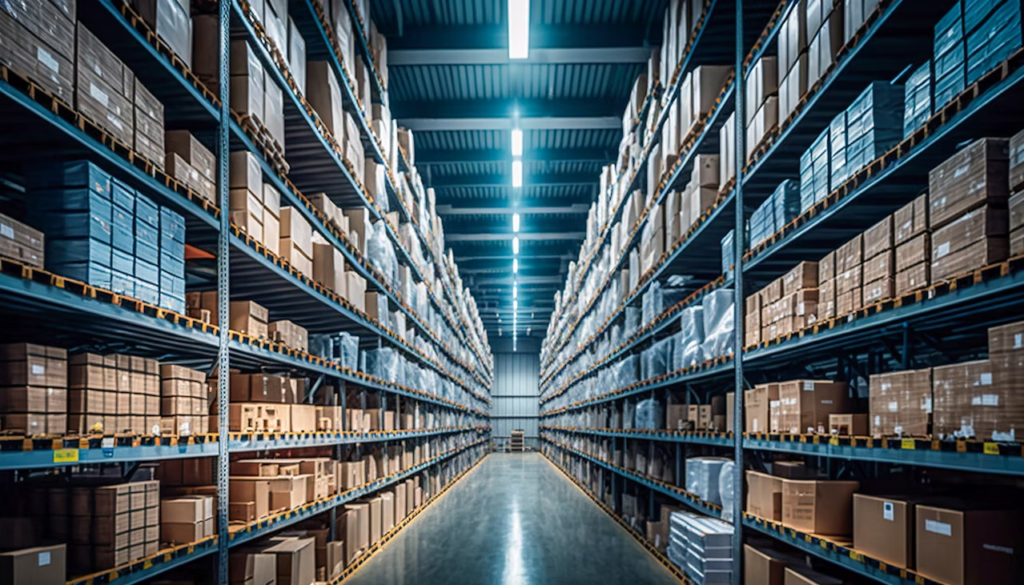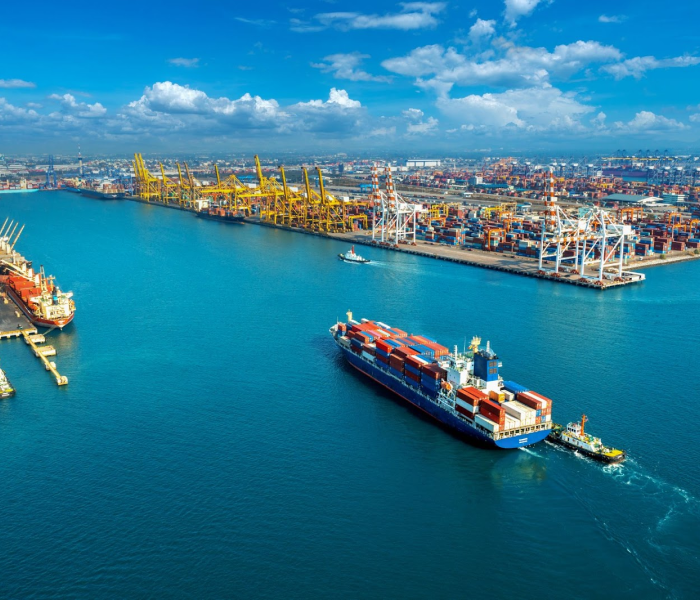In today’s interconnected world, global trade has become the cornerstone of modern supply chains. From raw materials to finished products, nearly everything we consume has passed through complex, multinational supply chains. The globalization of trade has not only made goods more accessible to people around the world but has also fundamentally reshaped how companies design, manage, and optimize their supply chains.
But as global trade continues to evolve, how exactly does it shape the structure and operations of supply chains? In this blog, we’ll explore the pivotal role of global trade in shaping supply chains, the benefits it brings, the challenges it poses, and how businesses can adapt to stay competitive in a globalized marketplace.

1. Global Trade Creates Access to Diverse Resources
One of the most significant ways global trade impacts supply chains is by providing access to a wider variety of resources. In the past, businesses often relied on local or regional suppliers for raw materials and finished goods. However, as global trade has expanded, companies have the ability to source materials, components, and products from virtually anywhere in the world.
Key Benefits:
- Cost Efficiency: Global trade allows companies to tap into cost-effective production locations, often where labor or materials are cheaper. For example, businesses can source electronics components from East Asia, raw materials like oil and metals from the Middle East or Africa, and agricultural products from Latin America. This access to diverse resources helps reduce production costs and increase profit margins.
- Product Diversity and Innovation: Access to a global marketplace means that businesses can offer a wider variety of products to meet local consumer demands. For example, the ability to import exotic fruits from South America or high-tech components from Japan means that consumers benefit from a wider selection of goods. Additionally, businesses can innovate by integrating new materials or components from different regions.
As supply chains become more globalized, companies gain the flexibility to choose the best suppliers based on cost, quality, and availability—ultimately benefiting consumers with more affordable and diverse products.
2. Supply Chain Efficiency Through Specialization
Global trade encourages countries to specialize in the production of certain goods or services in which they have a comparative advantage. This specialization has led to the rise of global value chains, where different stages of production occur across different countries.
How Specialization Shapes Supply Chains:
- Focused Production: Countries can focus on manufacturing specific products that they produce most efficiently, while importing other goods that they can’t produce as efficiently. For example, countries like China specialize in mass manufacturing of electronics, while countries like Brazil are major producers of agricultural commodities like soybeans and coffee. This creates an interdependent network where supply chains are more efficient, with each region contributing its unique strengths to the process.
- Faster Turnaround Times: By spreading production across the globe and utilizing the strengths of specialized regions, companies can accelerate production timelines. For instance, a car manufacturer might source steel from the U.S., electronics from Japan, and assembly labor from Mexico, thus speeding up time-to-market without sacrificing quality or increasing costs.
This global distribution of production capabilities and labor allows businesses to respond more quickly to consumer demand and market fluctuations while maintaining cost efficiencies.
3. Global Trade Facilitates Scalability
One of the main reasons companies engage in global trade is to scale their operations. The ability to tap into international markets allows businesses to expand their customer base, increase sales volume, and grow their businesses faster than they could by relying solely on local markets.
Key Ways Global Trade Facilitates Scalability:
- Access to Larger Markets: As businesses engage in global trade, they gain access to larger and more diverse markets. This is especially important for businesses in industries like electronics, fashion, automotive, and pharmaceuticals, where demand for products often spans continents. For example, a company manufacturing smartphones in South Korea can sell its products in North America, Europe, and Asia, leveraging global trade to drive growth.
- Economies of Scale: By expanding production for international markets, companies can take advantage of economies of scale. With access to larger demand, businesses can produce goods in higher volumes, which reduces per-unit costs and increases profit margins. For example, a large-scale production run of a popular electronic device may allow a company to negotiate better pricing for components, lowering overall production costs.
Global trade plays a crucial role in enabling businesses to achieve growth by providing access to new markets, expanding their reach, and increasing production efficiency.
4. Supply Chain Complexity and Risk Management
While global trade offers numerous advantages, it also adds layers of complexity and risk to supply chains. With longer supply chains and multiple international touchpoints, businesses face the challenge of managing logistics, complying with regulations, and mitigating risks. Disruptions in one part of the world can have a ripple effect, affecting production schedules, inventory levels, and even the ability to deliver products on time.
Key Challenges:
- Supply Chain Visibility: As supply chains become more global, it becomes harder for companies to maintain full visibility over every stage of the process. This lack of transparency can lead to inefficiencies, delays, and even quality control issues. For instance, if a component is delayed from a supplier in another country, it could halt the production of an entire product.
- Regulatory Compliance: Navigating the regulatory requirements of different countries can be complex. Each nation has its own set of rules for imports, exports, customs duties, environmental standards, and labor laws. Global trade requires businesses to stay informed about the regulations in each market and adapt to changing policies.
- Geopolitical and Environmental Risks: Global trade exposes businesses to risks like political instability, trade wars, and natural disasters that can disrupt the supply chain. For example, tariffs imposed during trade conflicts can increase costs, while natural disasters (like hurricanes or earthquakes) can halt production or disrupt transportation networks.
To address these challenges, businesses need to invest in risk management strategies such as diversifying suppliers, improving supply chain transparency with digital tools like blockchain, and establishing contingency plans to ensure business continuity.
5. Technology and Innovation in Global Supply Chains
Technology is at the heart of the global trade revolution. Innovations in logistics, data analytics, and automation have transformed how supply chains are designed and operated. As businesses continue to rely on global trade, technological advancements play an increasingly important role in improving efficiency, reducing costs, and improving customer satisfaction.
Technological Innovations Shaping Global Supply Chains:
- Automation and Robotics: The use of automation in warehouses, manufacturing plants, and even delivery systems is streamlining operations. Robots can now handle everything from packing to sorting, reducing human error and speeding up processing times.
- Blockchain for Transparency: Blockchain technology is making supply chains more transparent by providing an immutable, digital ledger for tracking goods as they move across borders. This can reduce fraud, ensure compliance, and improve traceability, especially for industries with strict regulatory requirements.
- AI and Machine Learning: AI-powered tools are helping businesses optimize inventory management, demand forecasting, and route planning. For instance, machine learning algorithms can predict shifts in consumer demand, allowing companies to adjust production and delivery schedules in real-time.
In the future, technological innovation will continue to shape global trade, making supply chains more agile, efficient, and responsive to changing market dynamics.
Conclusion: The Future of Global Trade and Supply Chains
Global trade is the foundation of modern supply chains, enabling businesses to access resources, scale operations, and deliver products to consumers around the world. However, as supply chains become more complex and interconnected, businesses must adopt strategic risk management practices and leverage technology to navigate the challenges of global trade.
In the years ahead, global trade will continue to play a central role in shaping the evolution of supply chains. Companies that can effectively manage their global supply networks, while embracing technological advancements and sustainability, will be better positioned to thrive in an increasingly competitive, interconnected world. With the right strategies, businesses can harness the full potential of global trade to drive growth, innovation, and success in the global marketplace.


